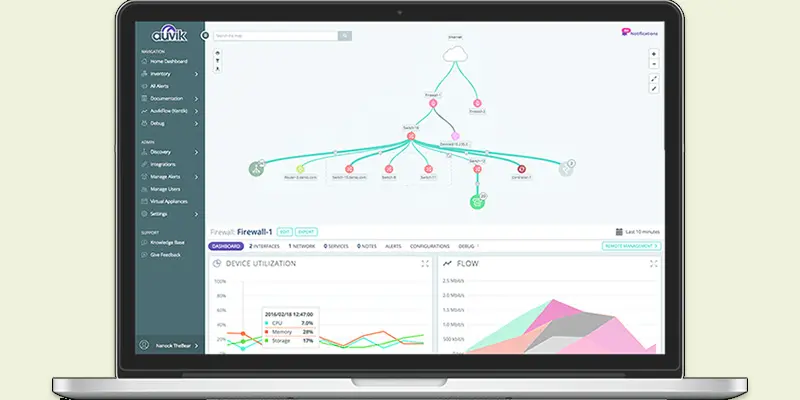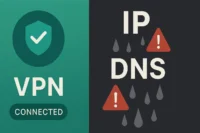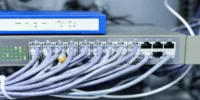Avoid Downtime | The Power of SD-WAN Monitoring
Published: 23 Mar 2025
SD-WAN Monitoring
SD WAN monitoring ensures stable network performance by tracking speed, security, and traffic. But do you know if your SD-WAN is truly optimized? Many businesses struggle with slow applications, downtime, and security threats due to poor network visibility. Imagine running a video call, and it keeps freezing, frustrating, right? That’s where SD-WAN monitoring helps, giving real-time insights to keep your network running smoothly.
What is SD-WAN Monitoring
SD-WAN monitoring is the process of tracking and managing your SD-WAN network’s performance. It helps check speed, security, and traffic to keep everything running smoothly. With real-time insights, you can fix issues before they cause slowdowns or downtime.

SD-WAN Monitoring Definition
SD-WAN monitoring is the process of tracking network performance, security, and traffic in real time. It helps ensure a fast, stable, and secure connection.
| Examples of SD-WAN Monitoring |
|---|
Here are some examples of SD-WAN monitoring in action:
|
Why is SD-WAN Monitoring Important
SD-WAN monitoring is important because it keeps your network fast, stable, and secure. It helps detect issues like slow speeds, downtime, and cyber threats before they affect your business. With real-time insights, you can fix problems quickly and ensure smooth operations.
It also improves the performance of critical applications like video calls, cloud software, and online tools. By managing traffic and optimizing bandwidth, SD-WAN monitoring helps businesses run efficiently without interruptions.
Key Features of SD-WAN Monitoring Tools
SD-WAN monitoring tools offer real-time insights, performance tracking, and security features to keep networks fast and reliable.
- Real-time network monitoring
- Performance analytics and reports
- Automated alerts and notifications
- Security threat detection
- Traffic and bandwidth management
- Application performance tracking
- Cloud and remote site monitoring
- AI-driven network optimization
Real-Time Network Monitoring
Real-time network monitoring continuously checks your SD-WAN for speed, traffic, and issues. It helps detect and fix problems instantly to keep your network running smoothly.
Performance Analytics and Reports
Performance analytics and reports provide insights into network speed, usage, and issues. They help you track trends and make better decisions for a smoother connection.
Automated Alerts and Notifications
Automated alerts and notifications instantly inform you about network issues or security threats. They help you take quick action to prevent downtime and keep things running smoothly.
Security Threat Detection
Security threat detection identifies cyber risks like hacks or malware in real time. It helps protect your network and keep data safe from attacks.
Traffic and Bandwidth Management
Traffic and bandwidth management controls network usage to prevent slow speeds. It ensures important applications get the best performance without interruptions.
Application Performance Tracking
Application performance tracking monitors how well apps run on your network. It helps detect slowdowns and ensures a smooth user experience.
Cloud and Remote Site Monitoring
Cloud and remote site monitoring tracks network performance across multiple locations. It ensures stable connections for remote offices and cloud-based services.
AI-Driven Network Optimization
AI-driven network optimization uses smart technology to improve speed and performance. It automatically adjusts settings to keep the network running smoothly.
SD-WAN Monitoring Tools
- Real-Time Monitoring: Tracks network speed and performance instantly.
- Traffic Management: Optimizes bandwidth for smooth application use.
- Automated Alerts: Notifies you of issues before they cause downtime.
- Security Threat Detection: Identifies and blocks cyber threats.
- Performance Reports: Provides insights to improve network efficiency.
- Cloud & Remote Monitoring: Ensures stable connections across locations.
- AI-Driven Optimization: Uses smart technology to enhance network speed.
How SD-WAN Monitoring Works
SD-WAN monitoring works by continuously tracking network performance, security, and traffic. It collects real-time data, analyzes it for issues, and alerts you to any problems.
It helps detect slow speeds, downtime, or cyber threats before they impact your business. With automated reports and AI-driven optimization, it ensures a fast, stable, and secure network.
Best Practices for Effective SD-WAN Monitoring
- Enable Real-Time Monitoring: Track network performance instantly.
- Set Up Automated Alerts: Get notified about issues immediately.
- Analyze Performance Reports: Review data to find and fix problems.
- Optimize Bandwidth Usage: Prioritize important applications.
- Enhance Security Measures: Detect and block cyber threats early.
- Use AI for Optimization: Automate performance improvements.
- Regularly Update Software: Keep SD-WAN tools running smoothly.
- Test and Troubleshoot Often: Identify and fix issues before they grow.

Conclusion
SD-WAN monitoring is essential for maintaining a fast and secure network. I highly recommend choosing a solution with real-time analytics and automated alerts to prevent downtime. If you want better network performance, start exploring SD-WAN monitoring tools today.
FAQS
A network monitoring tool checks the health, performance, and security of a network. It helps find issues like slow connections or downtime before they cause big problems.
Network device monitoring checks the status of devices like routers, switches, and servers. It ensures they work properly and alerts users if something goes wrong.
The best monitoring tool depends on your needs. Popular options include PRTG, Solar Winds, and Zabbix for tracking network health and security.
IT teams, businesses, and network administrators use network monitoring to keep systems running smoothly and prevent issues.
Monitoring tools collect and analyze network data. They track traffic, performance, and errors, then send alerts if something needs attention.
Top SD-WAN choices include Cisco, Fortinet, VMware, and Juniper. The best one depends on your business size, goals, and budget.
Yes, many companies are switching from MPLS to SD-WAN. SD-WAN offers more flexibility, lower costs, and better cloud performance.
First, SD-WAN depends on internet quality, which can affect speed. Second, it may need extra security tools if not built-in.
An example is a business using Cisco SD-WAN to connect its branches. It routes video calls and cloud apps over the best available internet line.
Yes, SD-WAN uses encryption like IPsec or TLS to protect your data. This keeps traffic safe over public networks.

- Be Respectful
- Stay Relevant
- Stay Positive
- True Feedback
- Encourage Discussion
- Avoid Spamming
- No Fake News
- Don't Copy-Paste
- No Personal Attacks

- Be Respectful
- Stay Relevant
- Stay Positive
- True Feedback
- Encourage Discussion
- Avoid Spamming
- No Fake News
- Don't Copy-Paste
- No Personal Attacks





